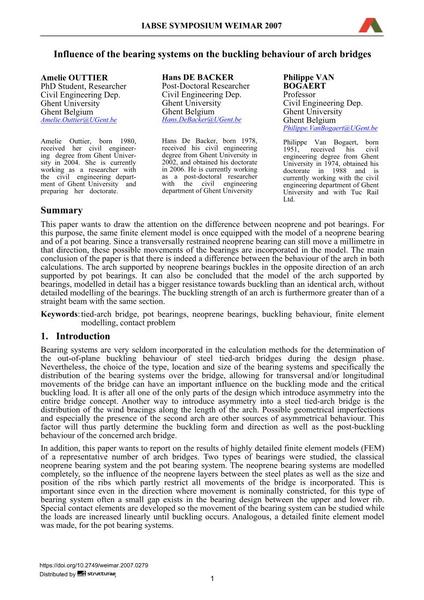Influence of the bearing systems on the buckling behaviour of arch bridges

|
|
|||||||||||
Bibliografische Angaben
| Autor(en): |
Amelie Outtier
Hans De Backer Philippe Van Bogaert |
||||
|---|---|---|---|---|---|
| Medium: | Tagungsbeitrag | ||||
| Sprache(n): | Englisch | ||||
| Tagung: | IABSE Symposium: Improving Infrastructure Worldwide, Weimar, Germany, 19-21 September 2007 | ||||
| Veröffentlicht in: | IABSE Symposium Weimar 2007 | ||||
|
|||||
| Seite(n): | 528-529 | ||||
| Anzahl der Seiten (im PDF): | 8 | ||||
| Jahr: | 2007 | ||||
| DOI: | 10.2749/weimar.2007.0279 | ||||
| Abstrakt: |
This paper wants to draw the attention on the difference between neoprene and pot bearings. For this purpose, the same finite element model is once equipped with the model of a neoprene bearing and of a pot bearing. Since a transversally restrained neoprene bearing can still move a millimetre in that direction, these possible movements of the bearings are incorporated in the model. The main conclusion of the paper is that there is indeed a difference between the behaviour of the arch in both calculations. The arch supported by neoprene bearings buckles in the opposite direction of an arch supported by pot bearings. It can also be concluded that the model of the arch supported by bearings, modelled in detail has a bigger resistance towards buckling than an identical arch, without detailed modelling of the bearings. The buckling strength of an arch is furthermore greater than of a straight beam with the same section. |
||||
| Stichwörter: |
Finite-Elemente-Modellierung Stabbogenbrücke Kontaktproblem Topflager
|
||||
